What is ISO?
ISO stands for International Standards Organization (sometimes denoted as ASA, which stands for American Standards Organization, on older film cameras). ISO is a measurement of how sensitive your film is to light. High ISOs indicate that your film is more sensitive to light, while low ISOs indicate that your film is less sensitive to light. Film stocks with high ISOs can be shot in low light scenarios, while film stocks with low ISOs are best shot in bright sun.
What is box speed?
Box speed is the ISO the manufacturer recommends shooting your film at. You can read it on the side of the film box or film canister and it’s usually in the name of the film as well (for example, Portra 400 has a 400 ISO box speed, which means that Kodak recommends shooting it at 400 ISO).
What is rating and how will it affect the look of my images?
Most film stocks need more light than their box speed recommends. Unlike digital, film retains detail in the highlights, so it can handle quite a bit of overexposure. For these reasons, we often recommend “rating” your film. Rating is what ISO you tell your meter you’re shooting at. It can be used to overexpose or underexpose your images. For example, rating Fuji 400H at 100 ISO is the same as overexposing the whole roll by two stops, because you cut the box speed ISO in half, twice.
Below are some medium format film stocks we see come through the lab on a daily basis. We shot each film stock at varying ISOs to show the way rating your film at an ISO other than box speed can affect the look of your images. We metered for the mid-tone on these rolls, developed each roll normally, and scanned each frame at equal brightness:
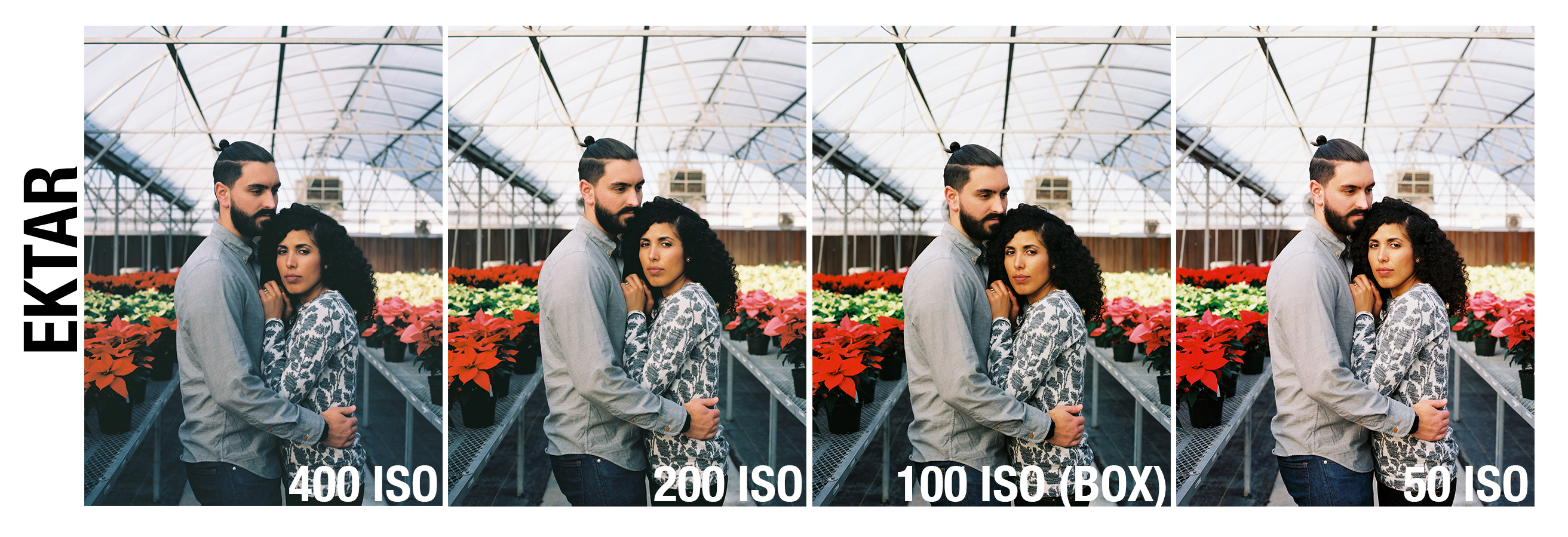
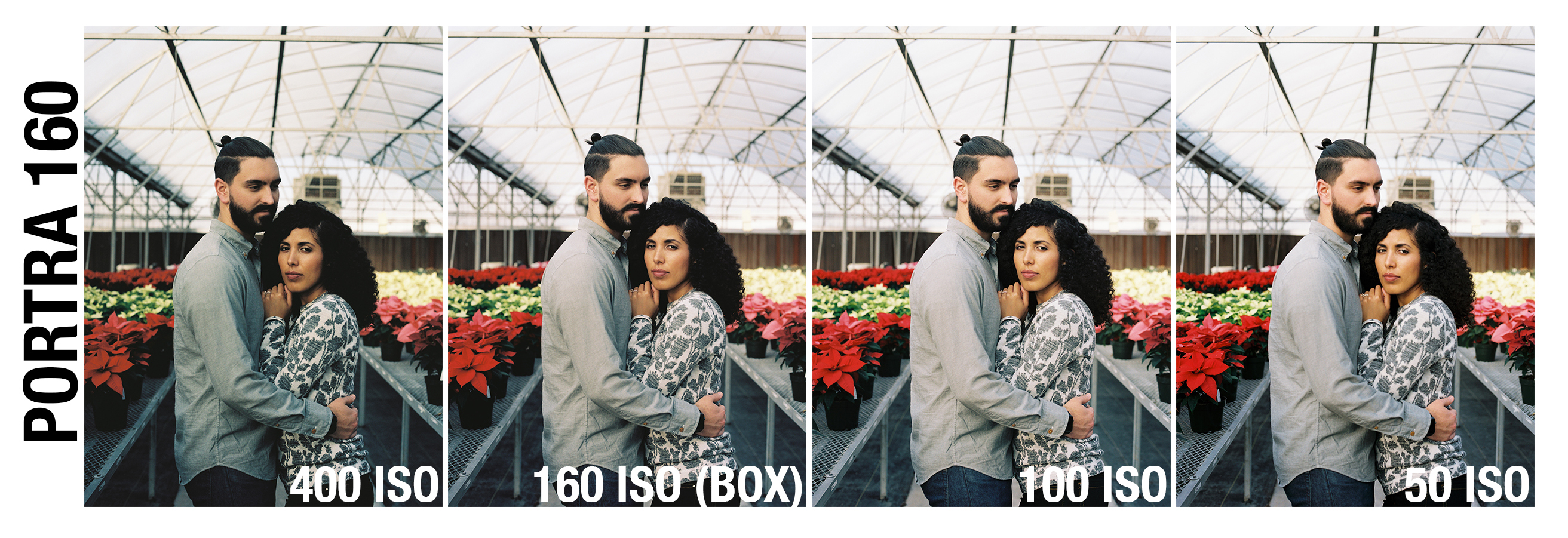
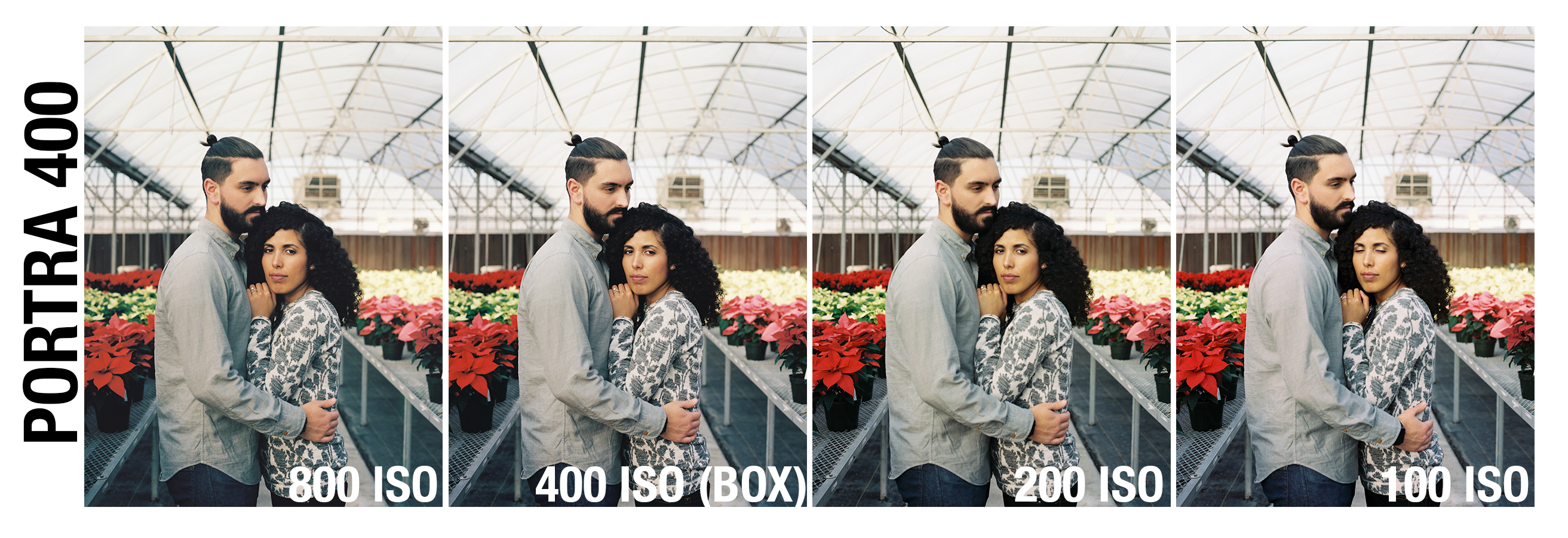
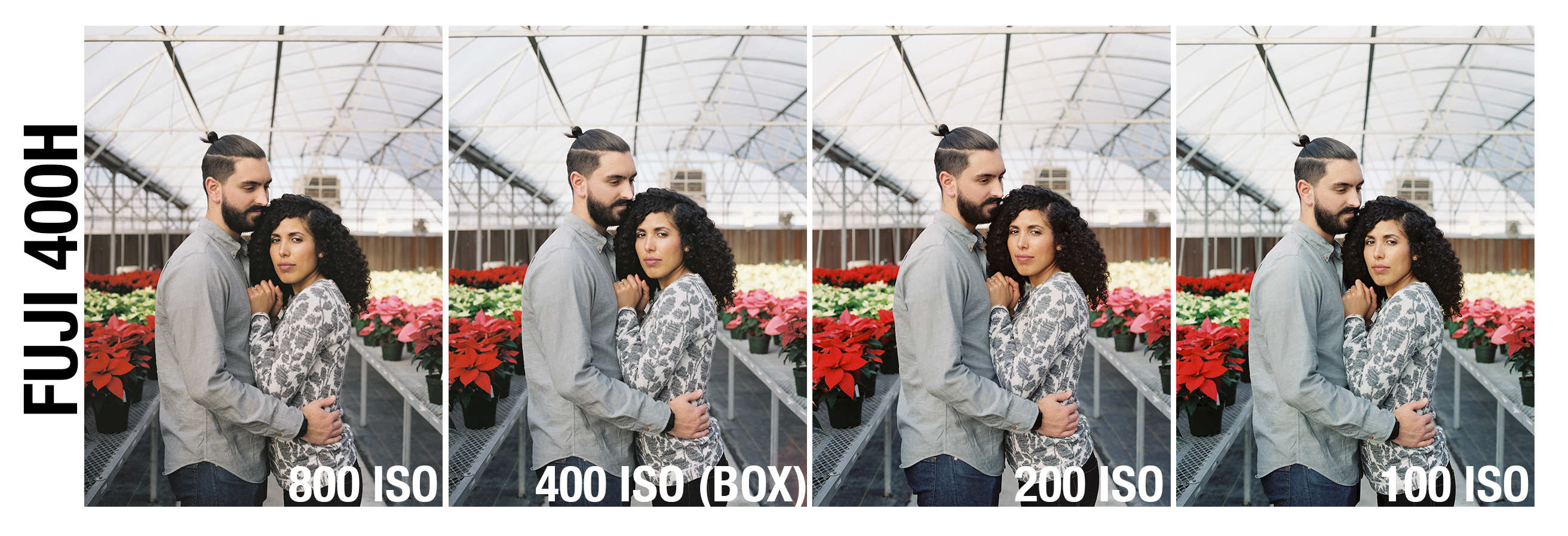
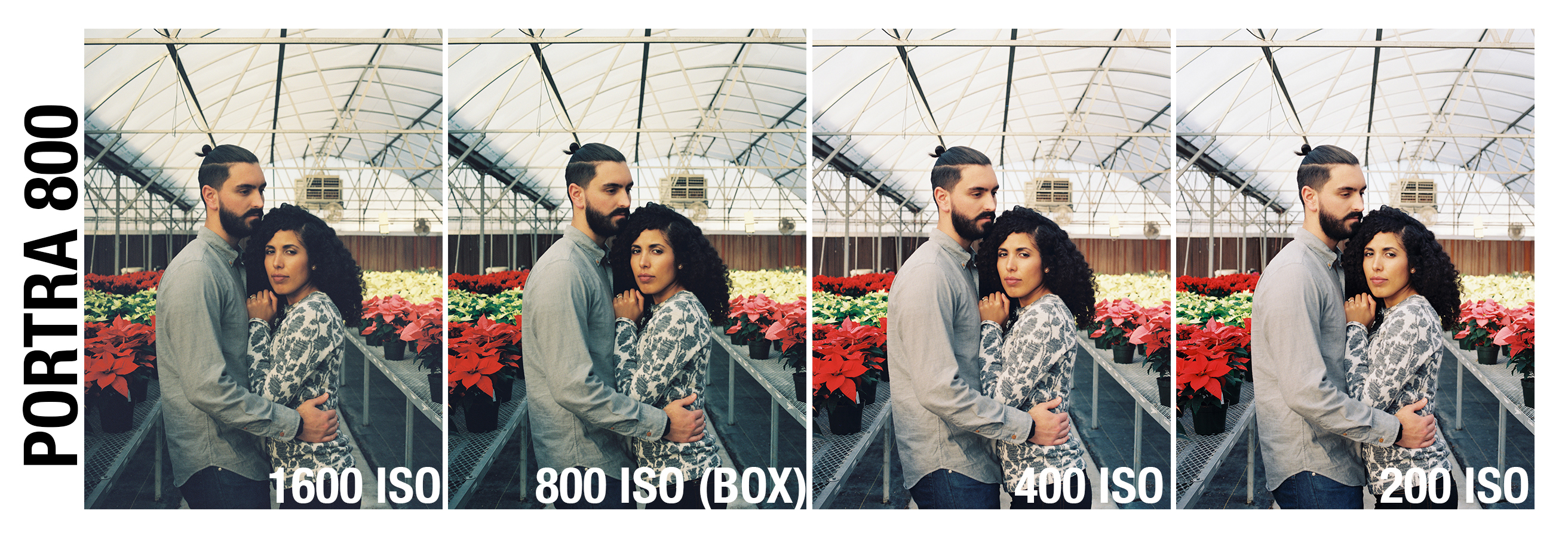 As you can see from these visuals, many film stocks are best shot at a lower ISO than box speed. Note in particular that Portra 800 is NOT a true low light film. We recommend rating Portra 800 between 200 and 400 ISO, depending on how you’re metering.
As you can see from these visuals, many film stocks are best shot at a lower ISO than box speed. Note in particular that Portra 800 is NOT a true low light film. We recommend rating Portra 800 between 200 and 400 ISO, depending on how you’re metering.
There are a lot of different ways to meter, so depending on how you’re metering, you may get different results with different ISO settings. Someone who meters for the mid-tones will get different exposure results with rating than someone who meters for the shadows, so the ISO that works best for you may be different from the ISO that works for someone else. You can read more about metering here.
Different types of lighting scenarios will also give you different exposure results: note that in the example above, we shot in a controlled setting with diffused light. Open sun, overcast or rainy weather, and low light will all influence exposures differently. In poor light, you will often need to overexpose more than you normally would to maintain good exposures and color.